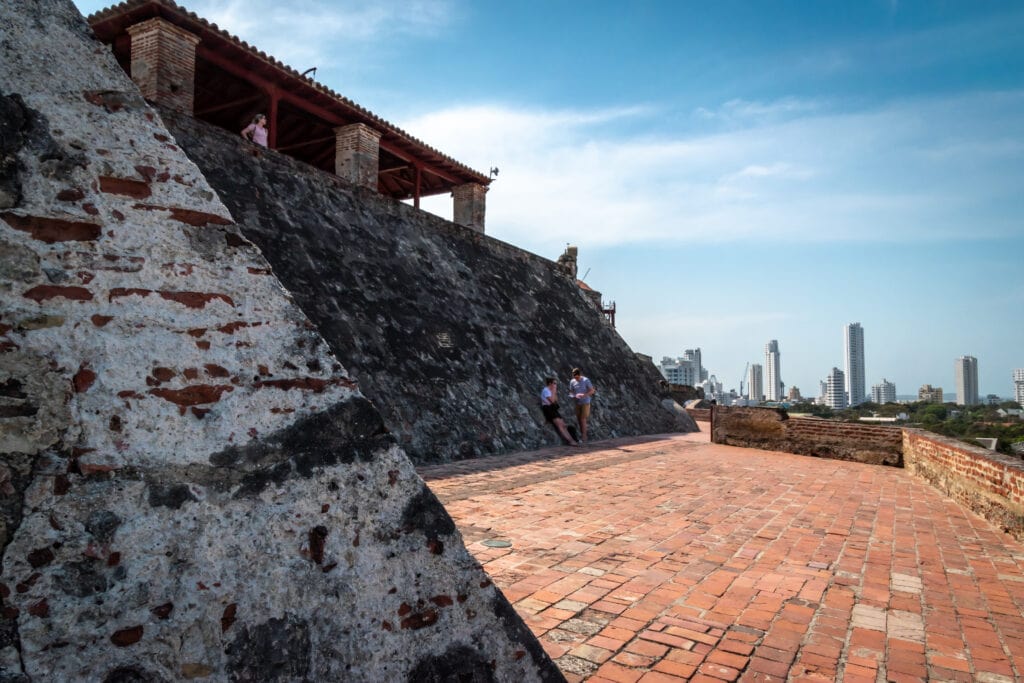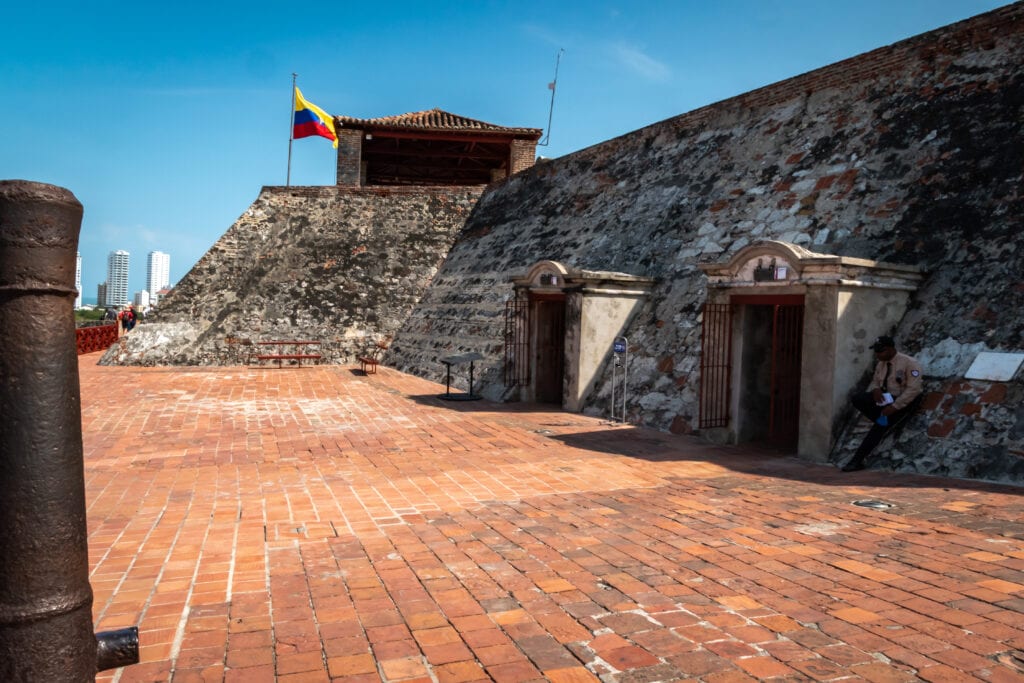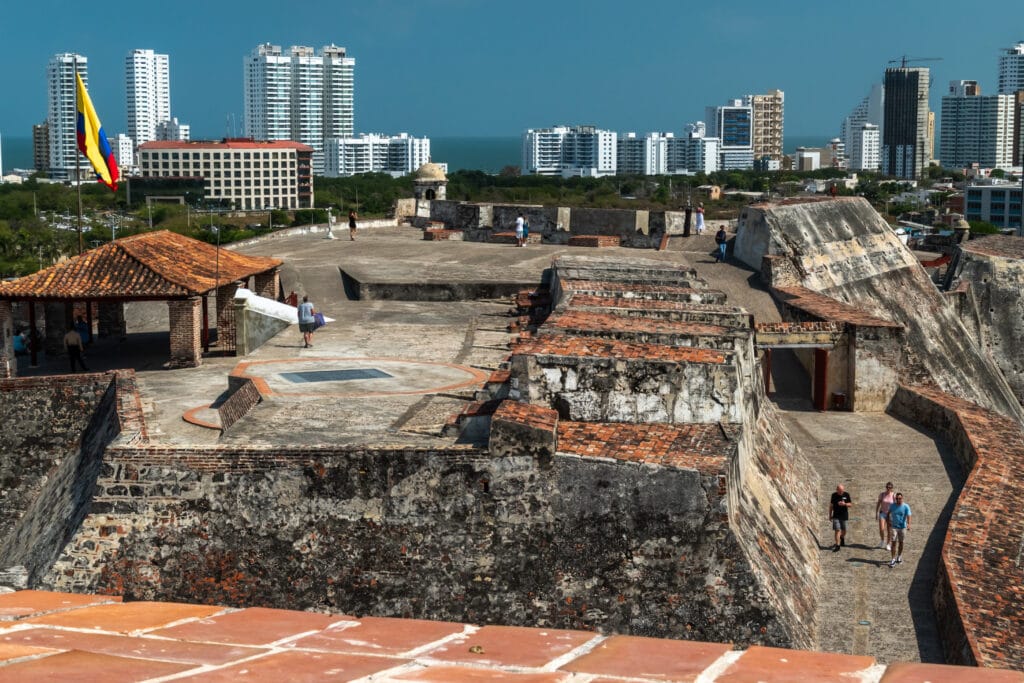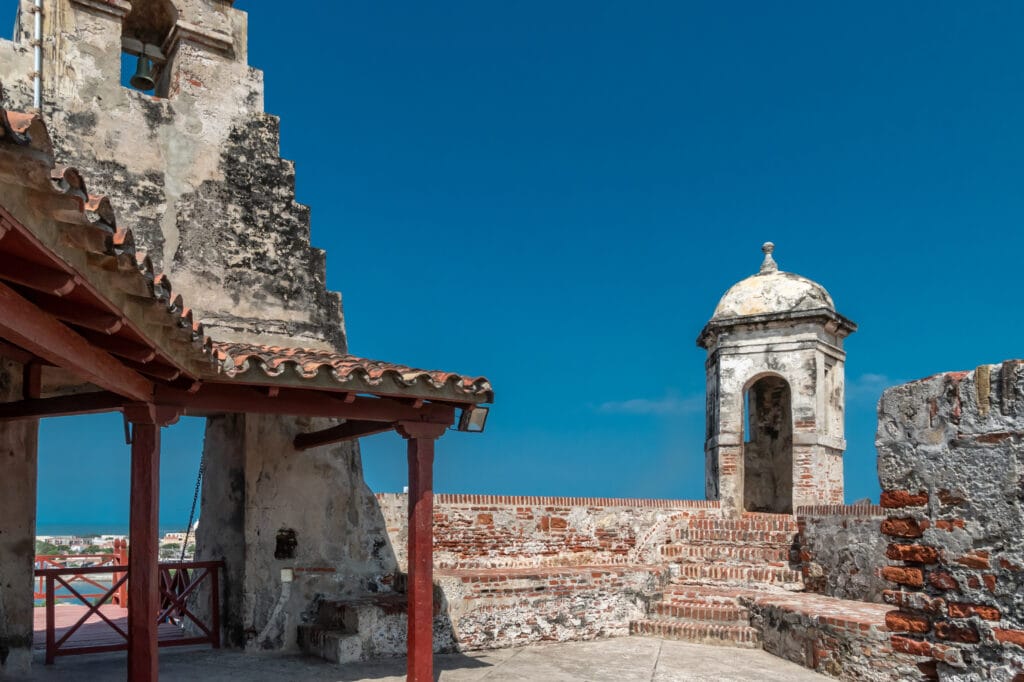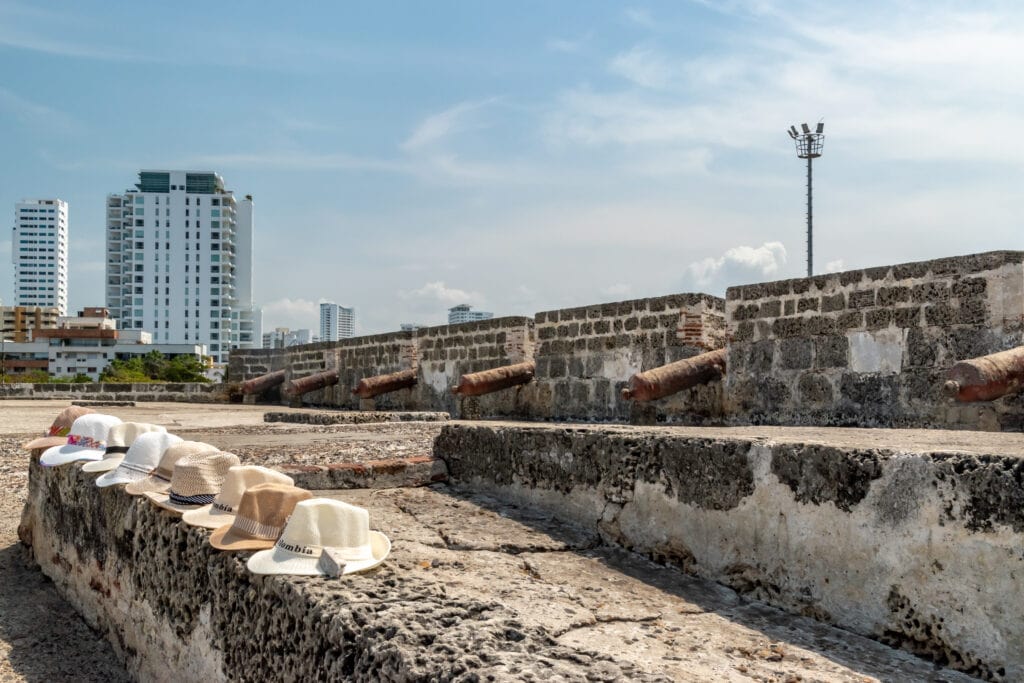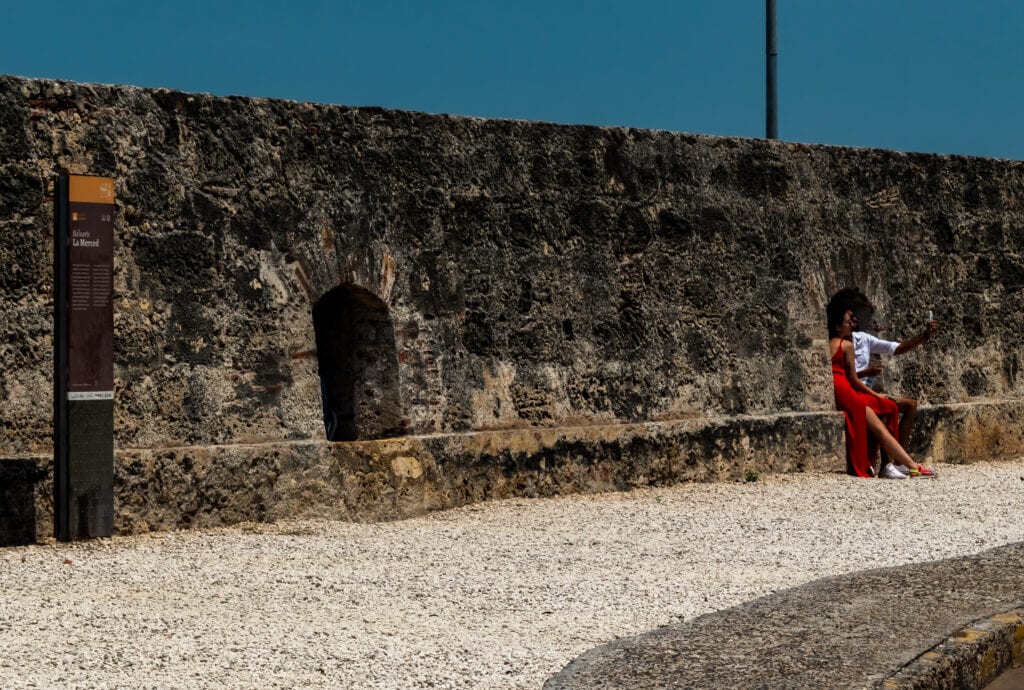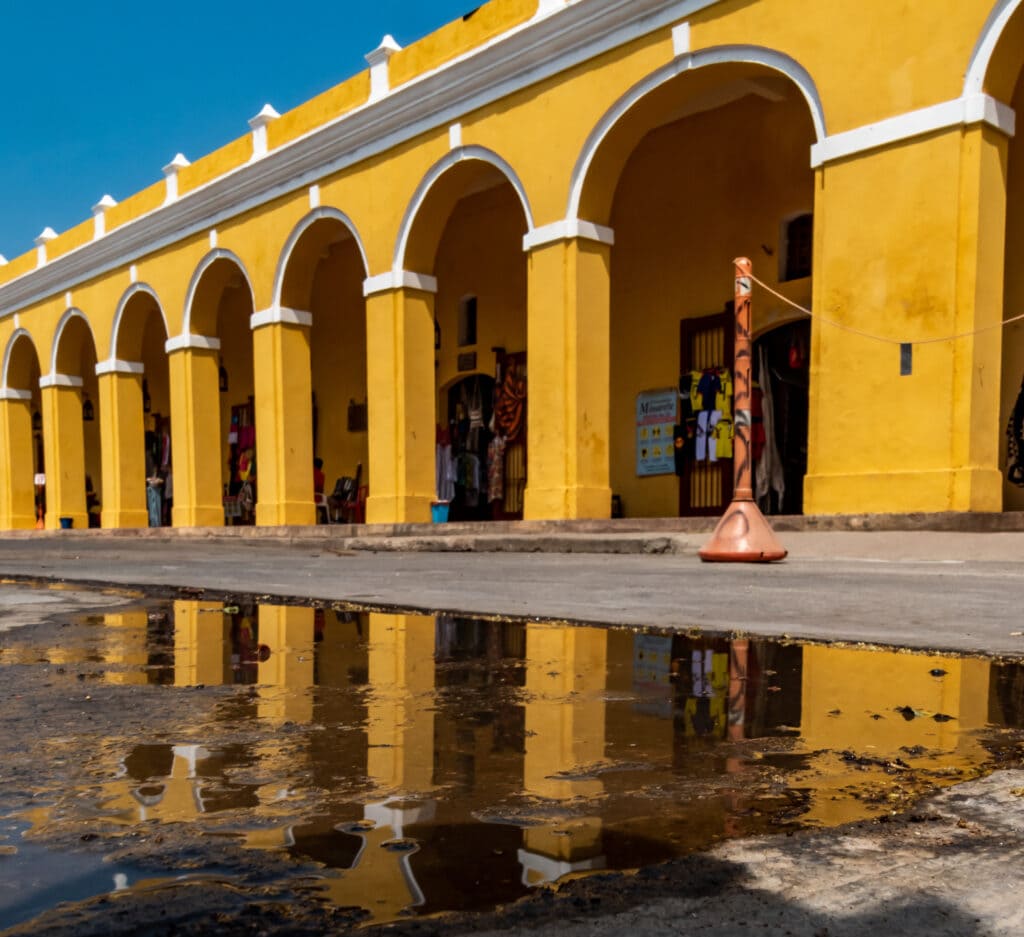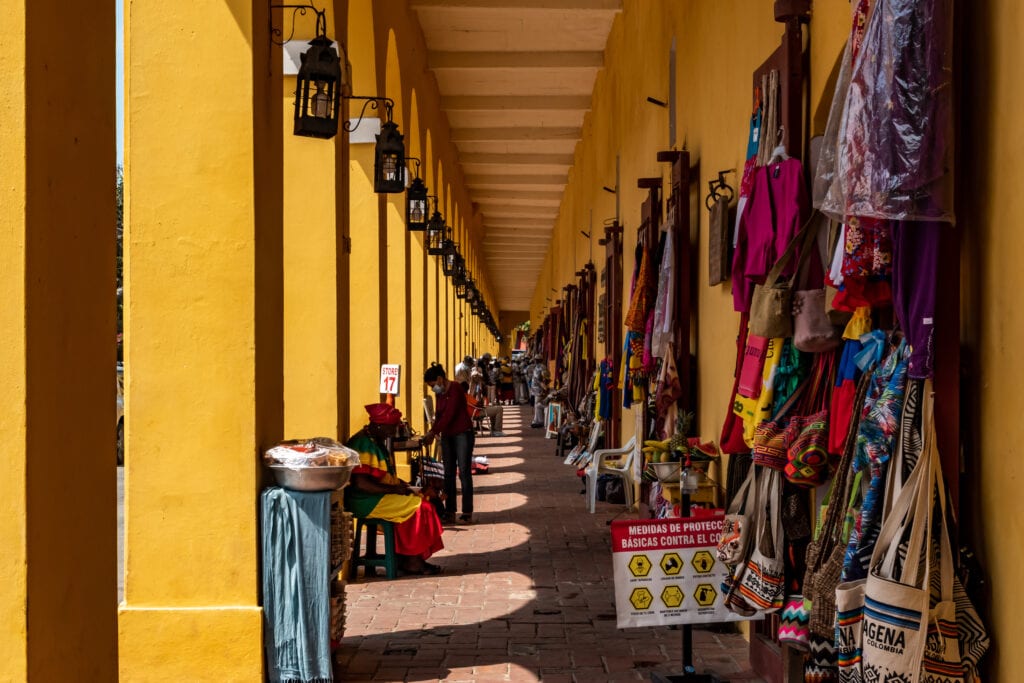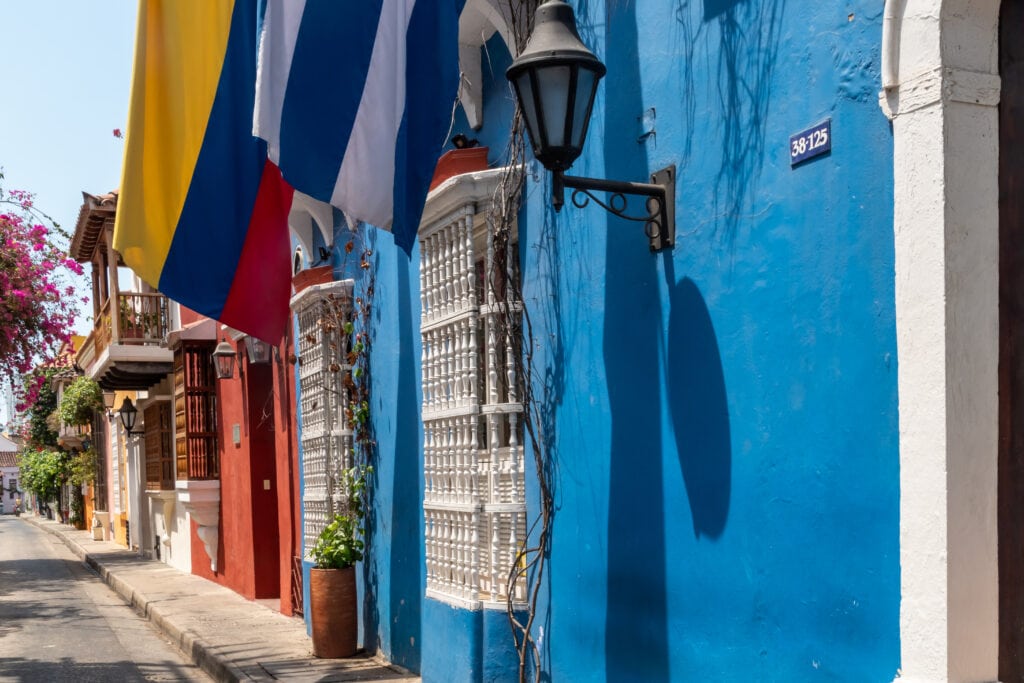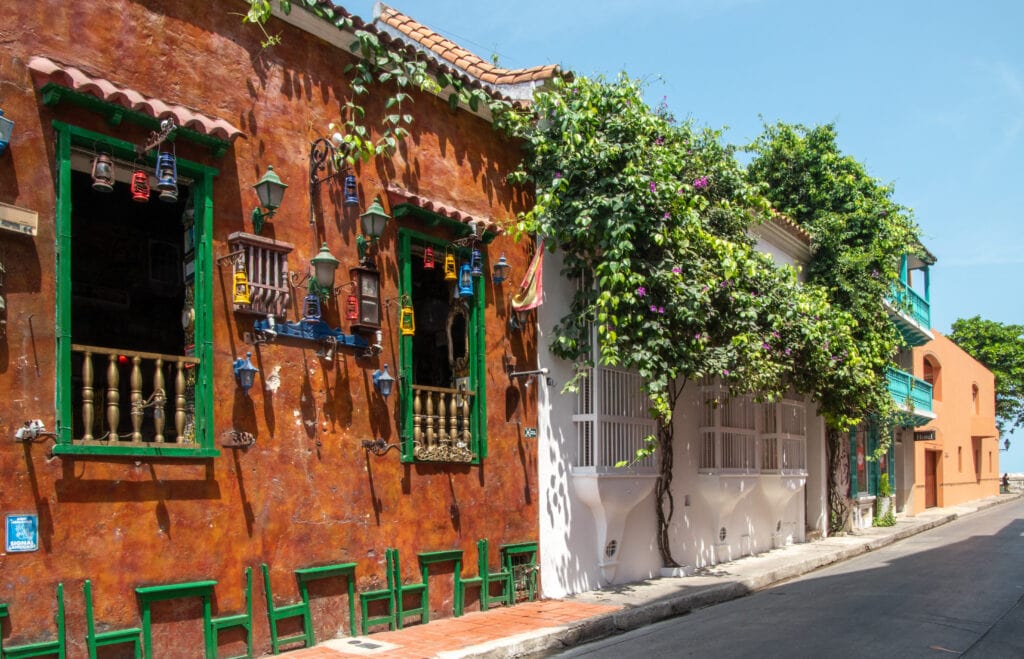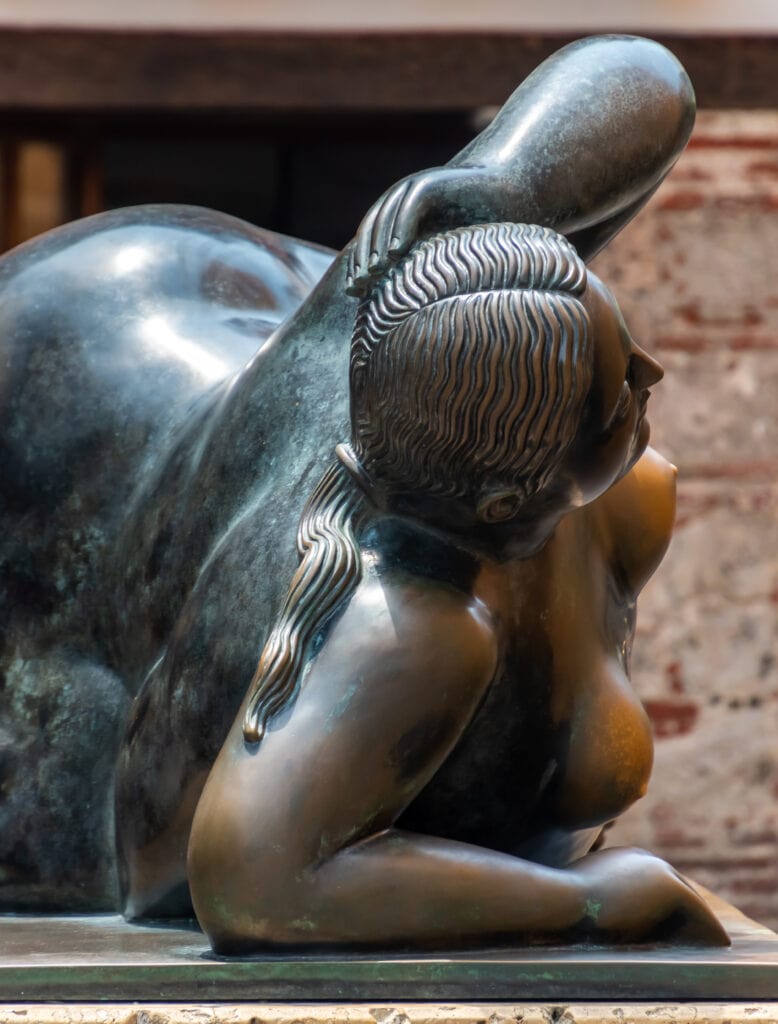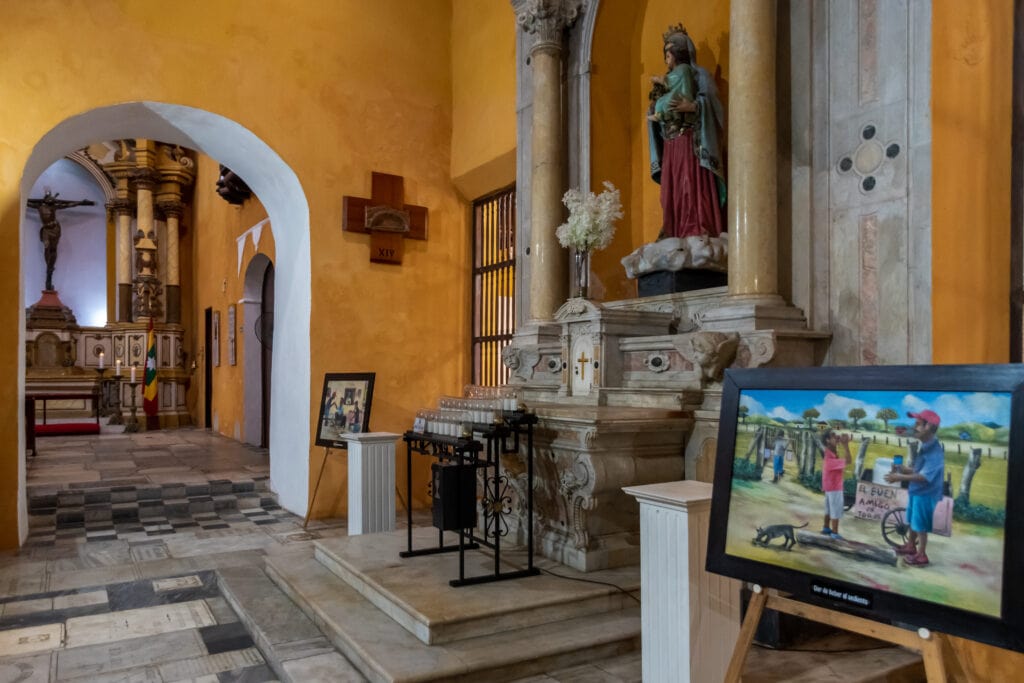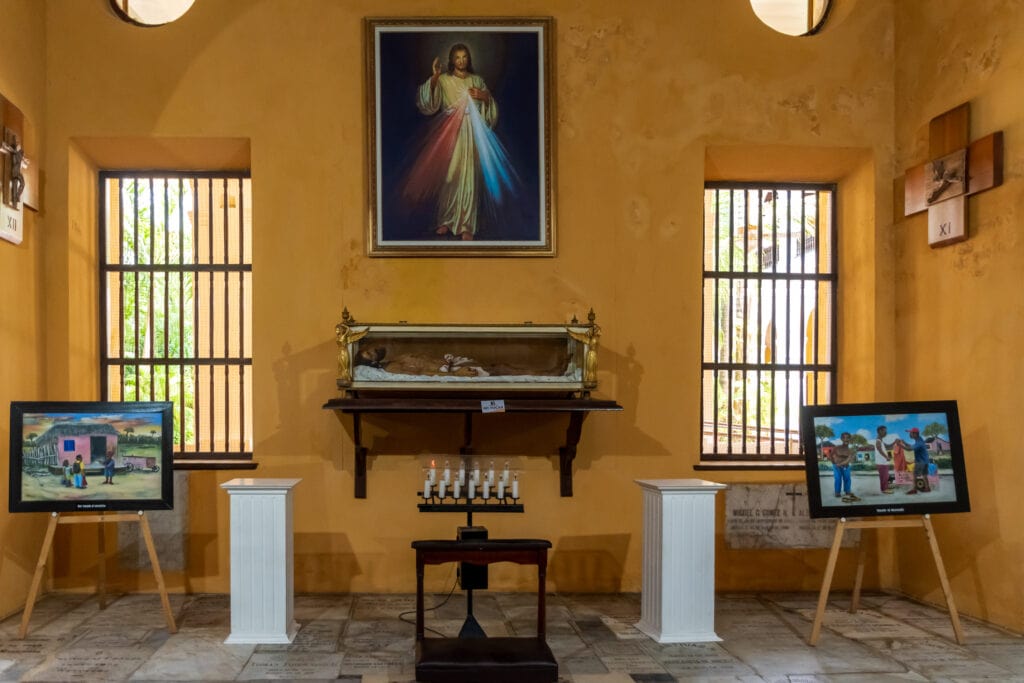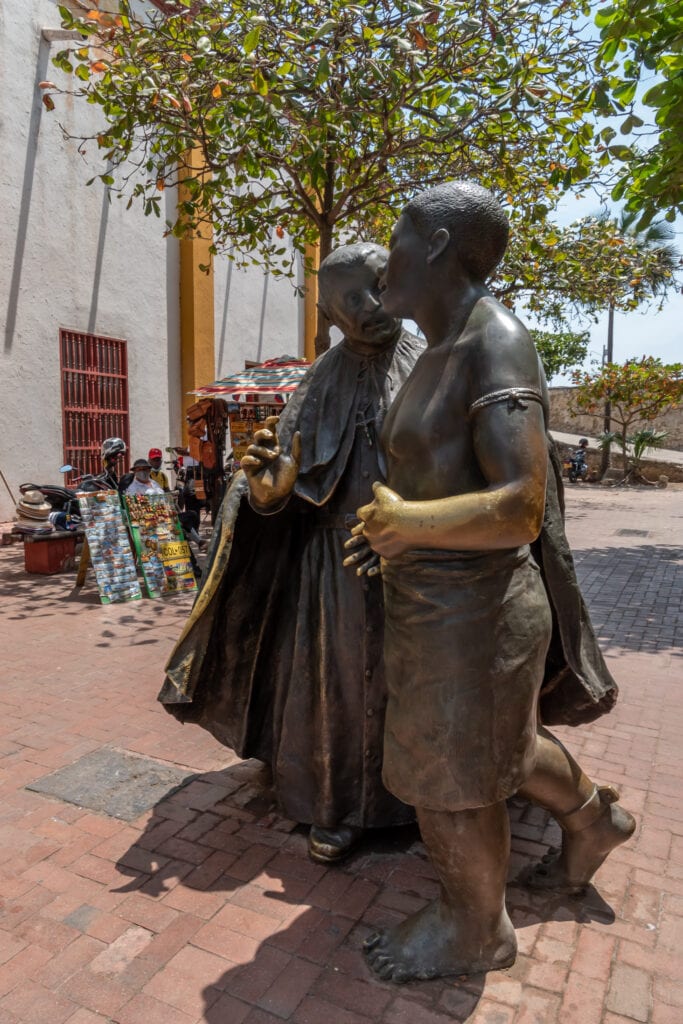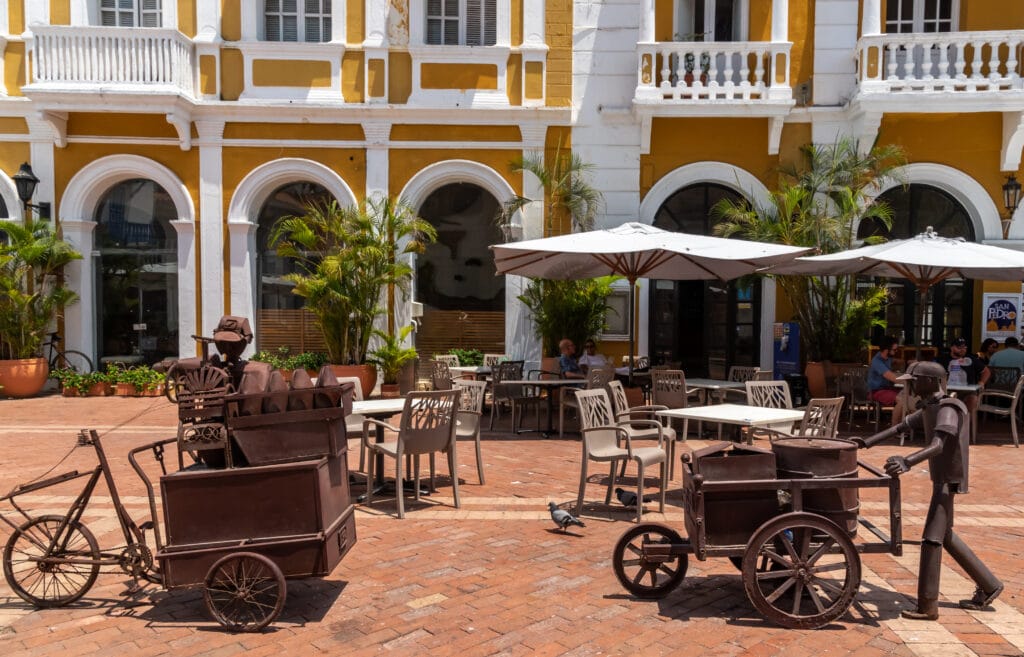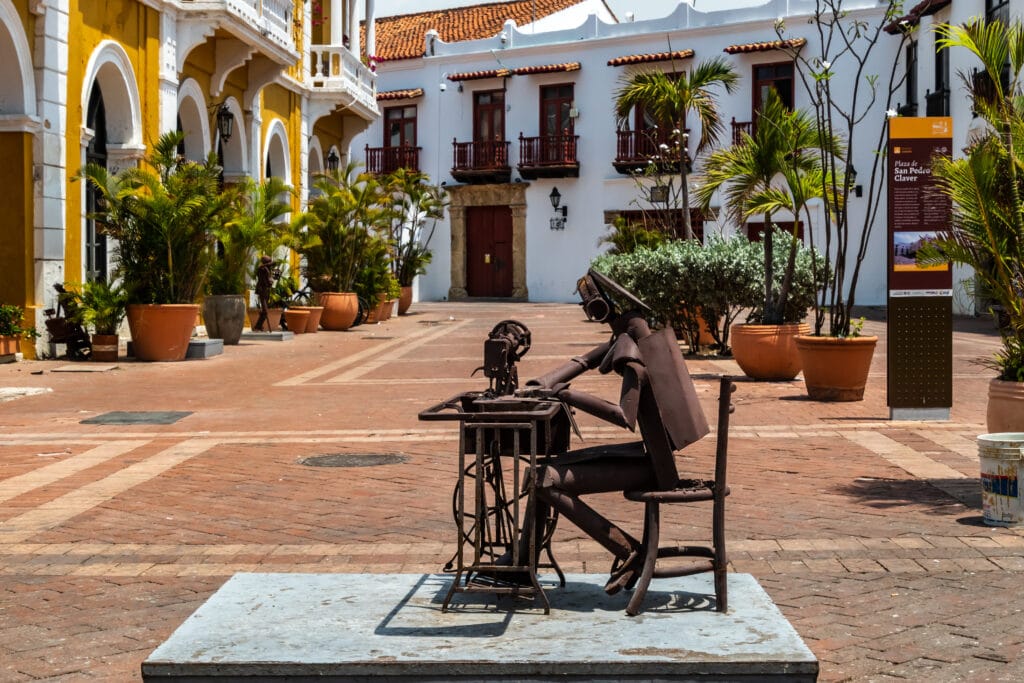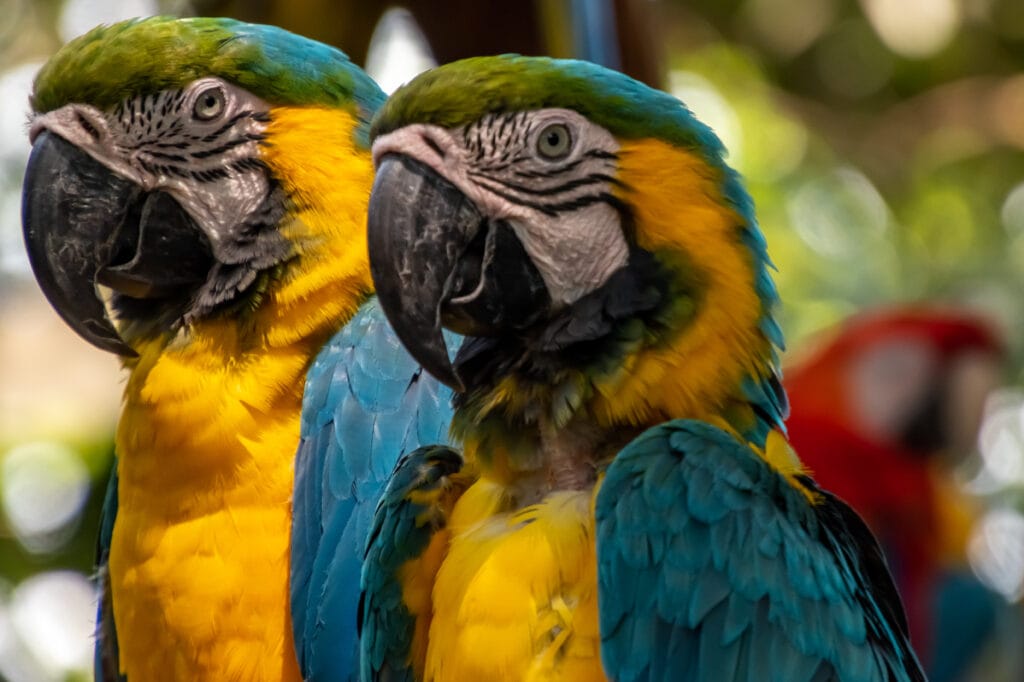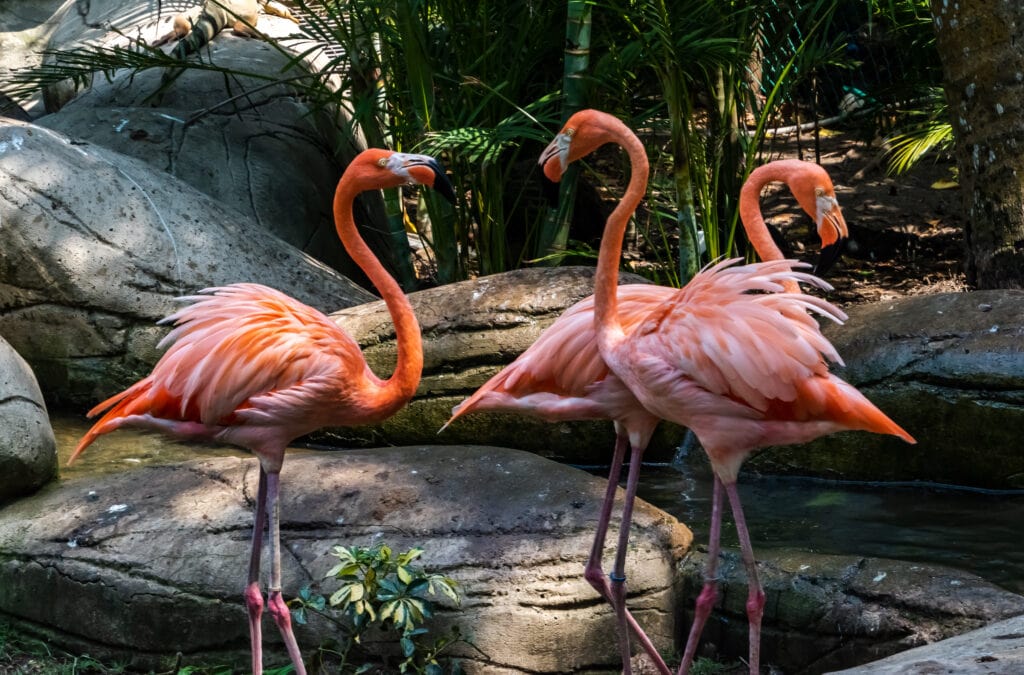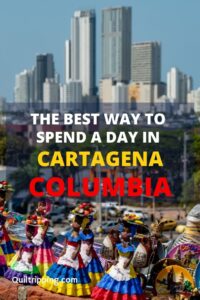Last Updated on 11/21/23 by Rose Palmer
 This story was recognized by the North American Travel Journalists Association with a Silver award in the Photography – Cover or Feature Photo/Illustration category in the 2022 annual media travel awards competition .
This story was recognized by the North American Travel Journalists Association with a Silver award in the Photography – Cover or Feature Photo/Illustration category in the 2022 annual media travel awards competition .
The first stop on my Ruby Princess full transit Panama Canal cruise was Cartagena, Columbia. This was my first visit to Columbia, and I would only have six hours in port so I was going to make the most of it. My focus for my one day in Cartagena was on the UNESCO listed Old Town and the nearby Fort Castillo de San Filipe de Barajas.
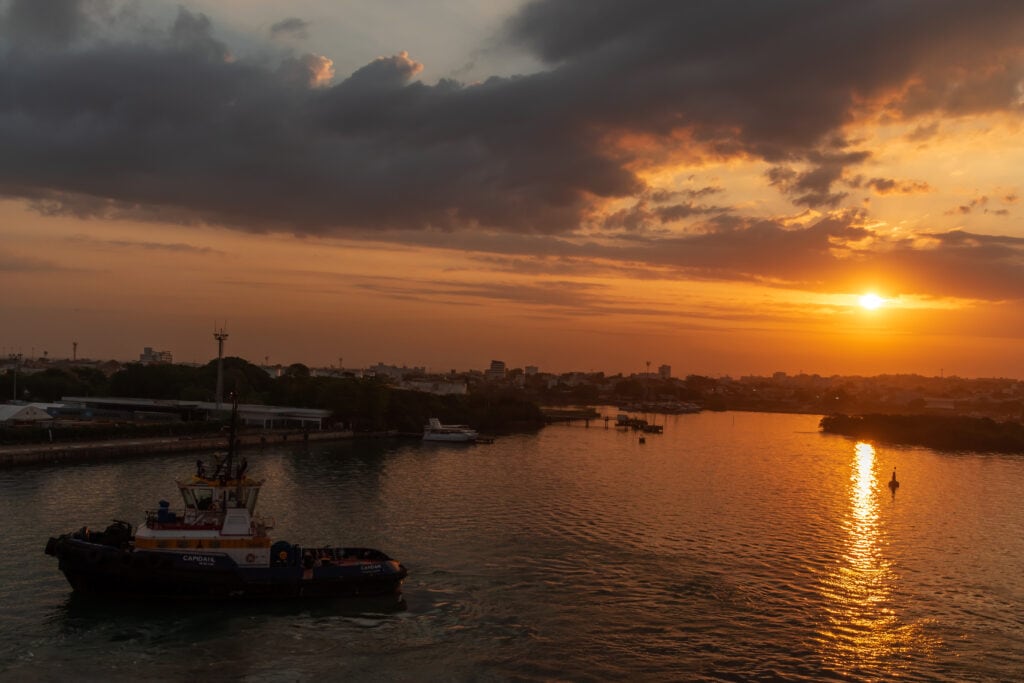
After evaluating the various excursion options that Princess cruises was offering in Cartagena, I chose the HopOn-HopOff bus tour because it gave me the most flexibility. As a photographer, I like to explore on my own so that I have the time to study and take in my surroundings, and this bus tour would provide that.
How I spent one day in Cartagena, Columbia
The bus met us right at the ship and by 9 AM the wheels were rolling. The bus ride included a 90 minute free walking tour of the Old Town of Cartagena. Or, if I did not want to walk, I could just stay on the bus for the audio guided 90 minute driving circuit around the whole city.
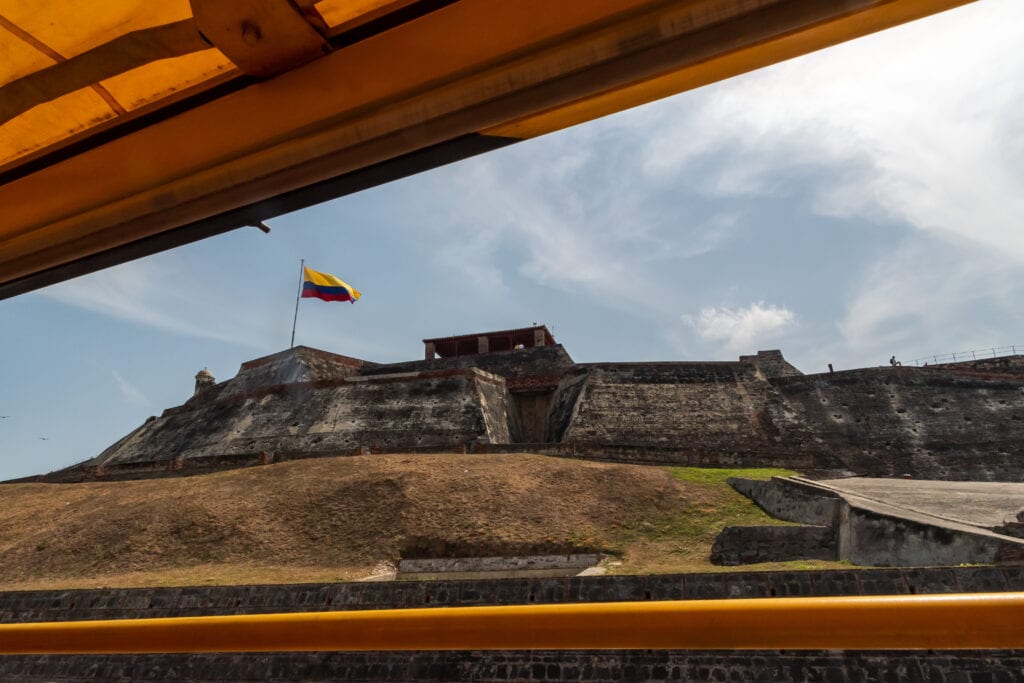
The majority of the cruise goers chose to either stay on the bus or do the guided walking tour. I was one of the few that ventured off on my own.
Fort Castillo de San Filipe de Barajas
It was a 20 minute bus drive from the ship to my first point of interest – Castillo de San Felipe de Barajas (stop # 3 on the tour). Entrance to the fort was not included in the HopOn-HopOff excursion price, but one of the bus guides helped me purchase a ticket that fast tracked me through the gate.
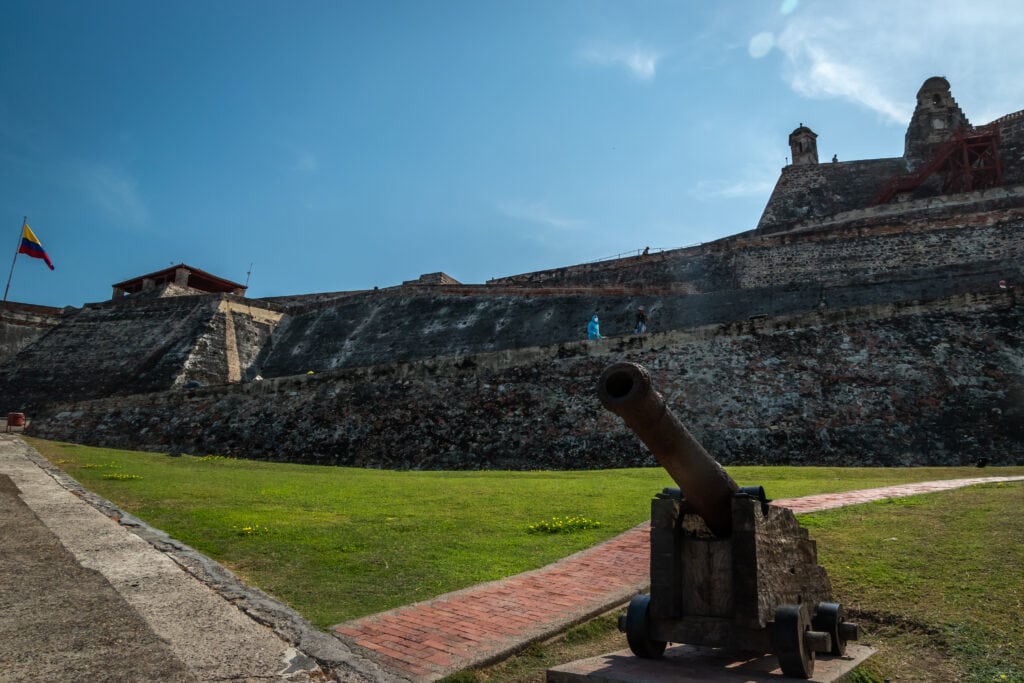
The city of Cartagena was established in 1533 by the Spanish and quickly became an important port for exporting Peruvian silver back home to Spain and importing slaves for the Americas. This also made the city a desirable target for pirates and corsairs.
To protect their interests, the Spanish built large protective walls encircling the city. Many of these walls still stand today, surrounding the historic Old Town of Cartagena. They also put up a number of forts in the area, including the one I was visiting.
The first elements of a fortress were built here on top of the Hill of San Lazaro in 1536 during the Spanish colonial era. This high vantage point provided commanding views of the land and the sea in all directions and allowed the Spanish to easily protect themselves.
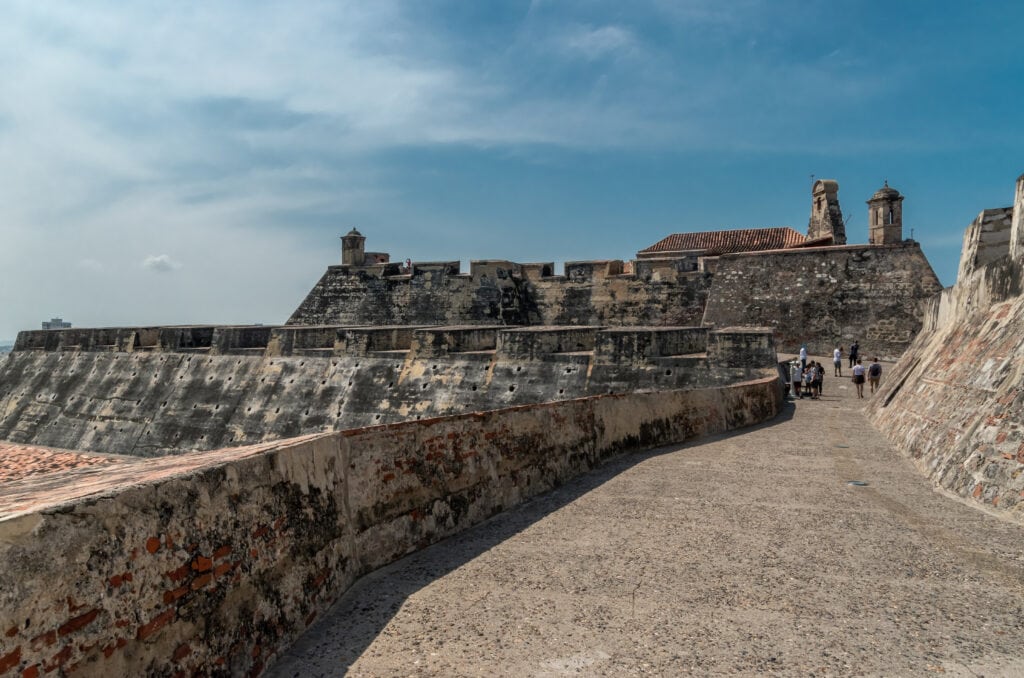
Over the subsequent centuries as the attacks on the wealth of Cartagena increased, so did the size of Fort Castillo as it added more layers and wings. It became one of the largest forts in Latin America. In 1984 UNESCO listed this fort and Cartagena’s Old town as a World Heritage Site.
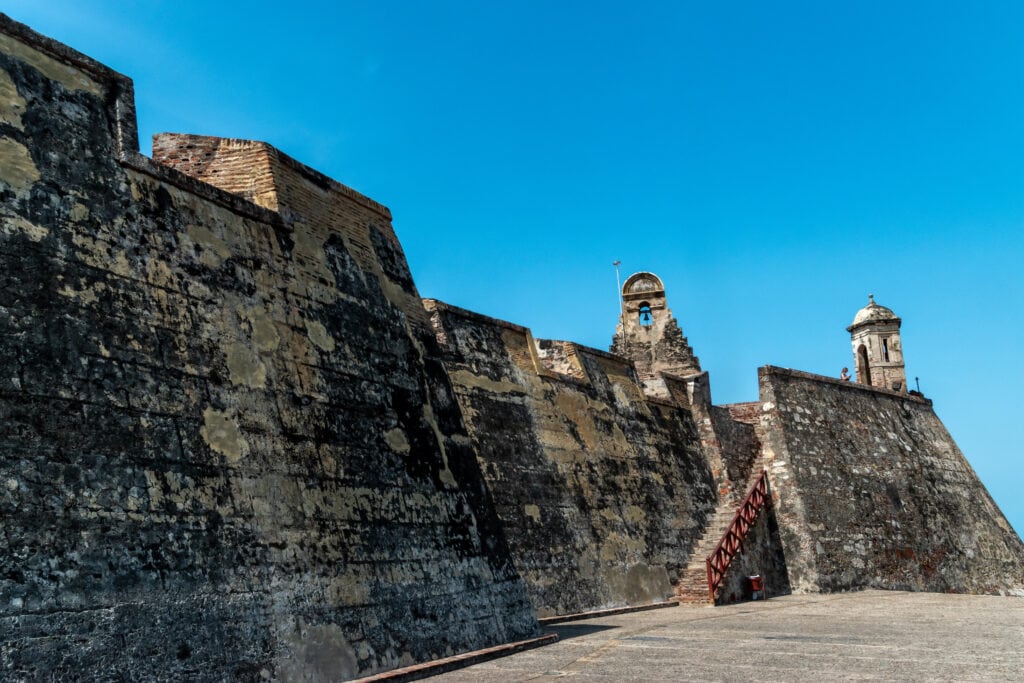
I was glad to be exploring the Castillo San Filipe in the early morning when temperatures were a little cooler. It was a steep uphill climb to the top and the walls and other open areas at the top of the fort provided no shade.
I spent about an hour walking along the various levels and poking into some of the nooks and crannies. There were a few plaques with some descriptive information in English, but not very many. A guided tour would have provided more insight to what I was looking at.
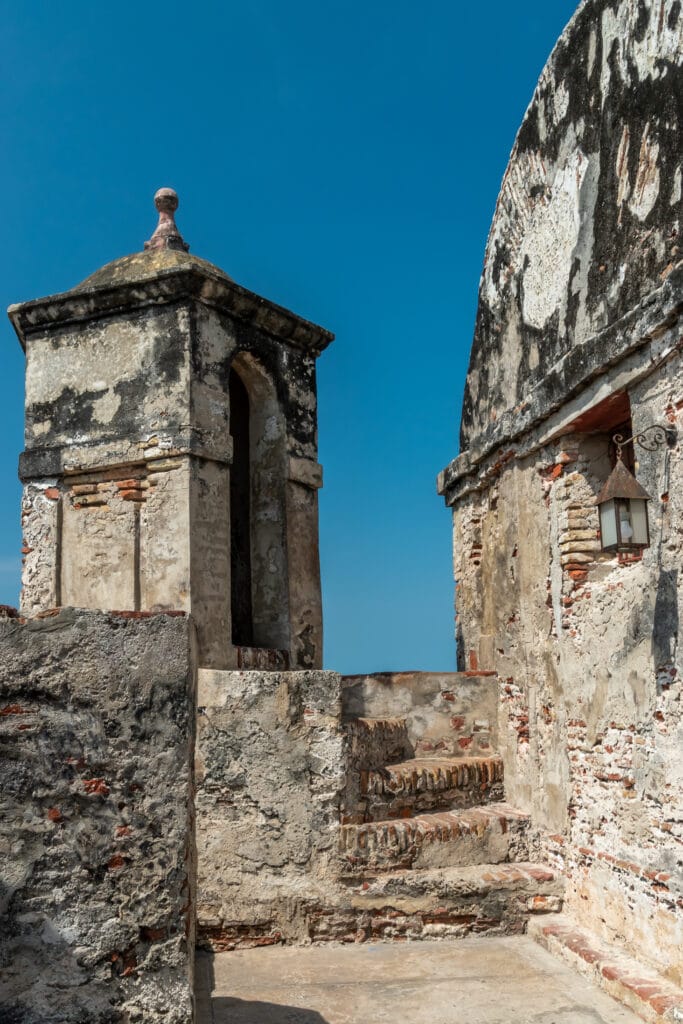
The builders included a network of tunnels under the many walls of the fort to make it easy to get from one area to another. Some of these tunnels were open to the public and were interesting to explore.
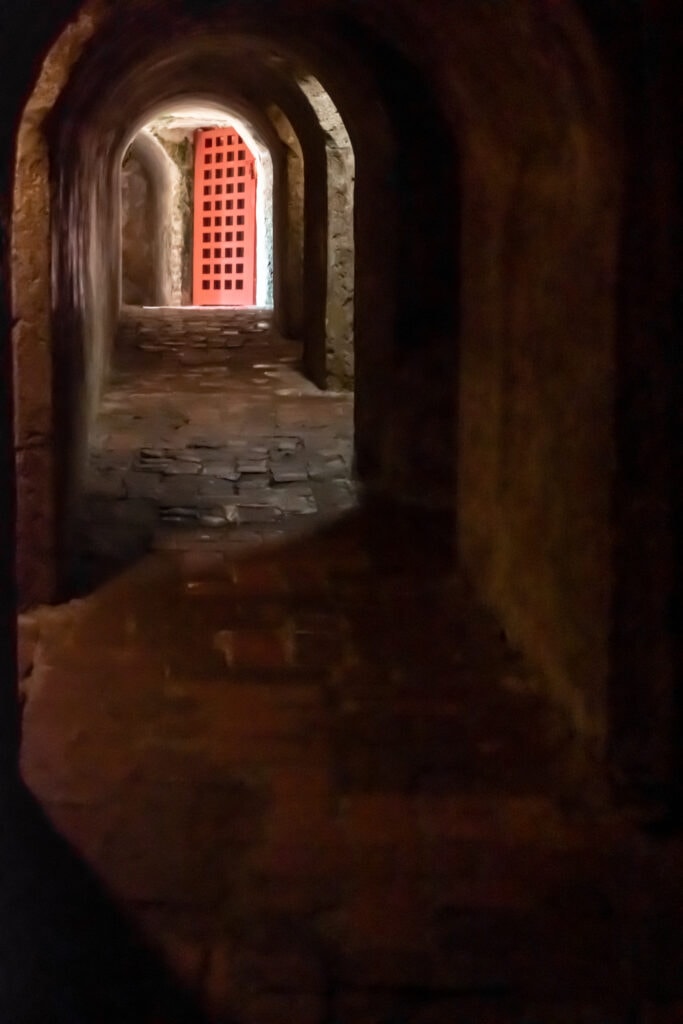
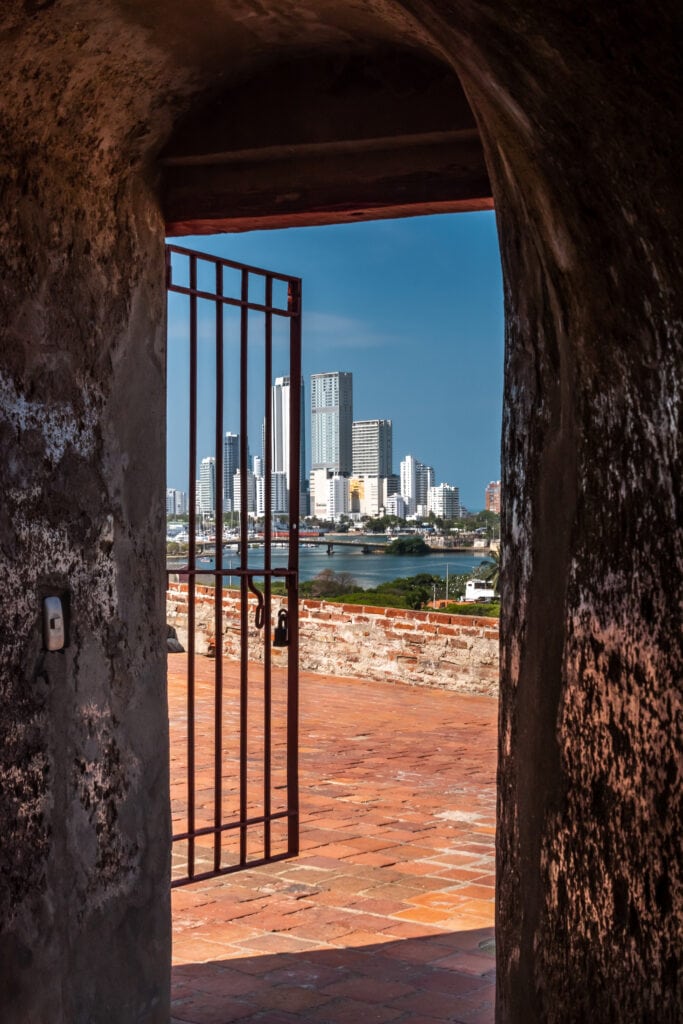
What I found most fascinating was the contrast between the old fort and the high rise buildings on display in the modern section of Cartagena. Where cannons once pointed toward approaches for possible attack by the French and British, those same cannons now point toward shiny new businesses and condos.
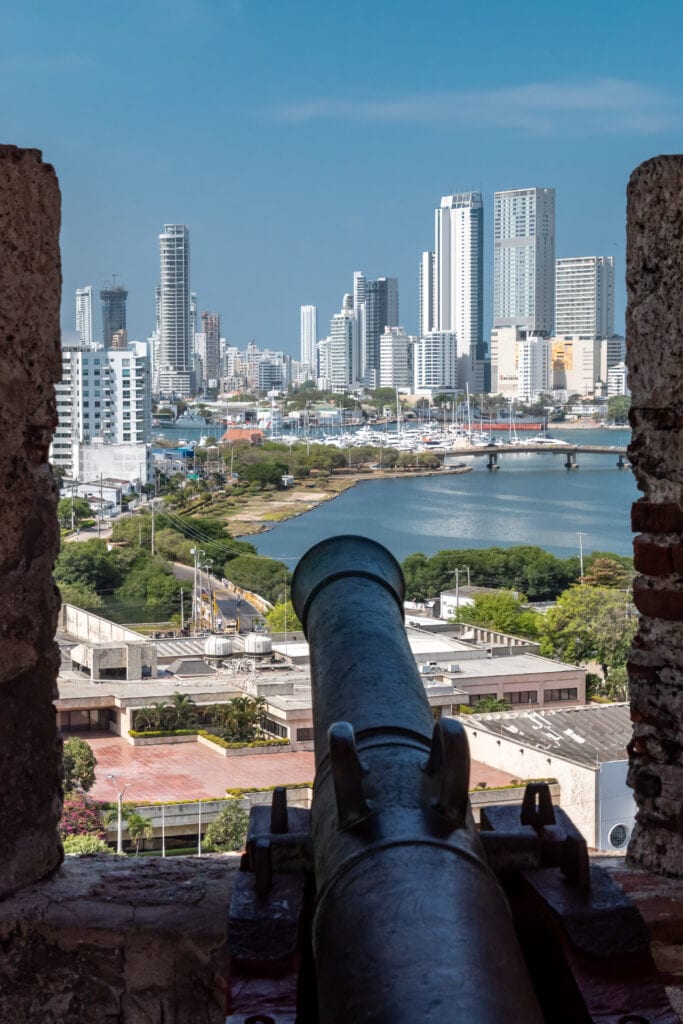
Discovering Cartagena Old Town
I kept an eye on my watch and made sure to catch the 10:30 HopOn-HopOff bust as it continued on its circuit. I got off at the next stop (#4) – the Rafael Nunez Museum stop. This put me at the entrance to the northern corner of the walled Old City. I wished I had the time to visit the museum, but knew I did not.
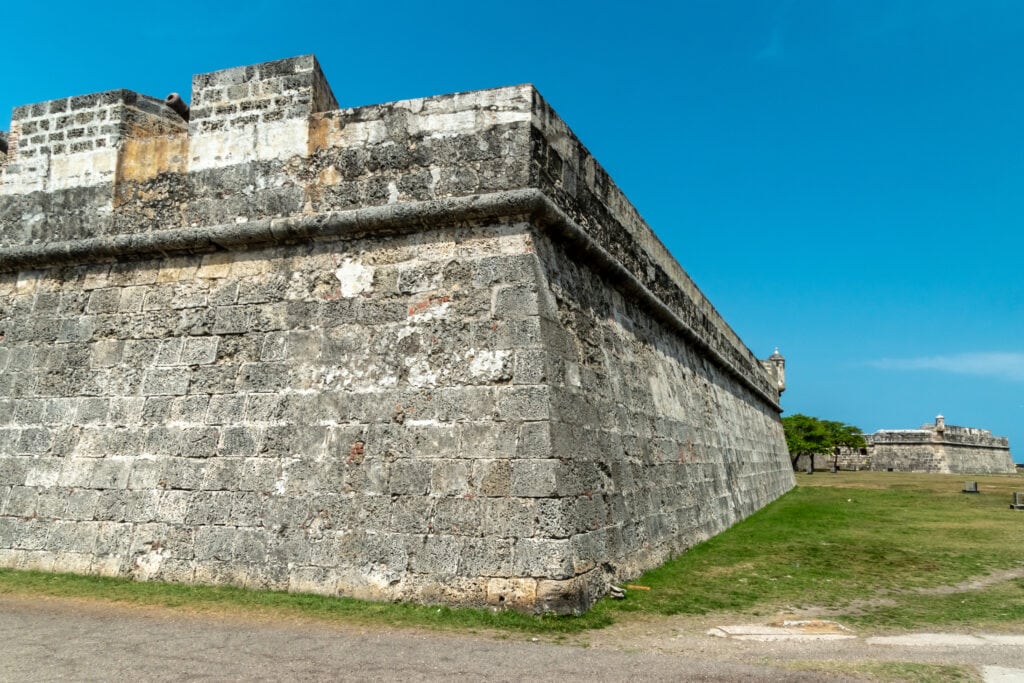
Cartagena’s old walls
I started my explorations with Cartagena’s famous walls. The original, protective fortification still surrounds most of the Old Town, so access into the city is through entrances cut into this massively thick stone barrier.
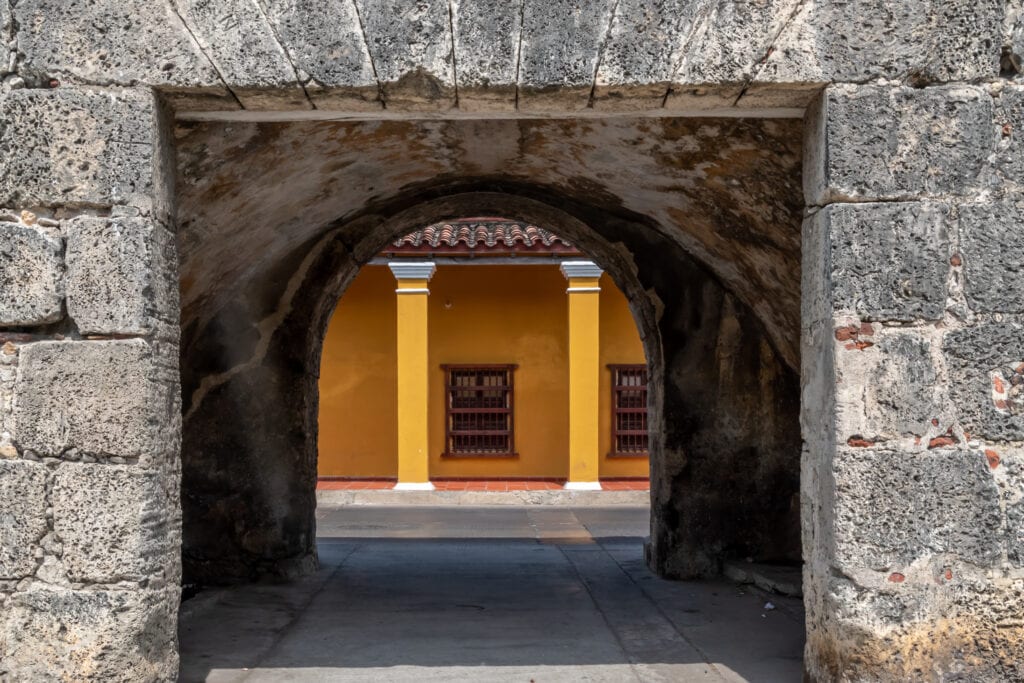
Near the entrance, a wide ramp took me to the top of the wall where I had panoramic views across the town and the nearby sea. The construction on these walls began in 1614 after the successful attack by Sir Francis Drake. Over the next 200 years, Cartagena continued to build its walls, cocooning itself from invaders, and most of them still stand today.
From the walls I continued inland. For the next two and a half hours I wandered the lanes of the Old Town, walking wherever whimsy took me. I tried to keep to a general south and east direction toward the Clock Tower entrance. It was here that I was supposed to pick up the bus back to the ship.
Las Bovedas shopping arcade
My first stop was Las Bovedas, a series of vaults built in 1792 next to the city walls. They were initially used as munitions storage and later as prisons. Today, they house all manner of shops selling colorful souvenirs and local crafts. This is also a popular stop on cruise ship excursions.
Strolling Cartagena Old Town
My stroll took me through quiet streets with preserved and restored colorful houses that often had balconies draped in blooming bougainvillea. Cartagena’s Old Town is a UNESCO World Heritage listed site and its Spanish Colonial architecture has benefited from the protection that comes with this status.
Every few blocks the streets come together into small plazas. I steered my feet toward Plaza Santo Domingo, one of Cartagena’s most famous squares.
Plaza Santo Domingo
The plaza was lined with cafes and restaurants, and I decided this was a good spot for a quick break at Cafe San Alberto. After all, I was in Columbia and I had to try some of the local coffee. Their sign said they had the best coffee in Cartagena, so I had to buy some to take home to my husband as well.
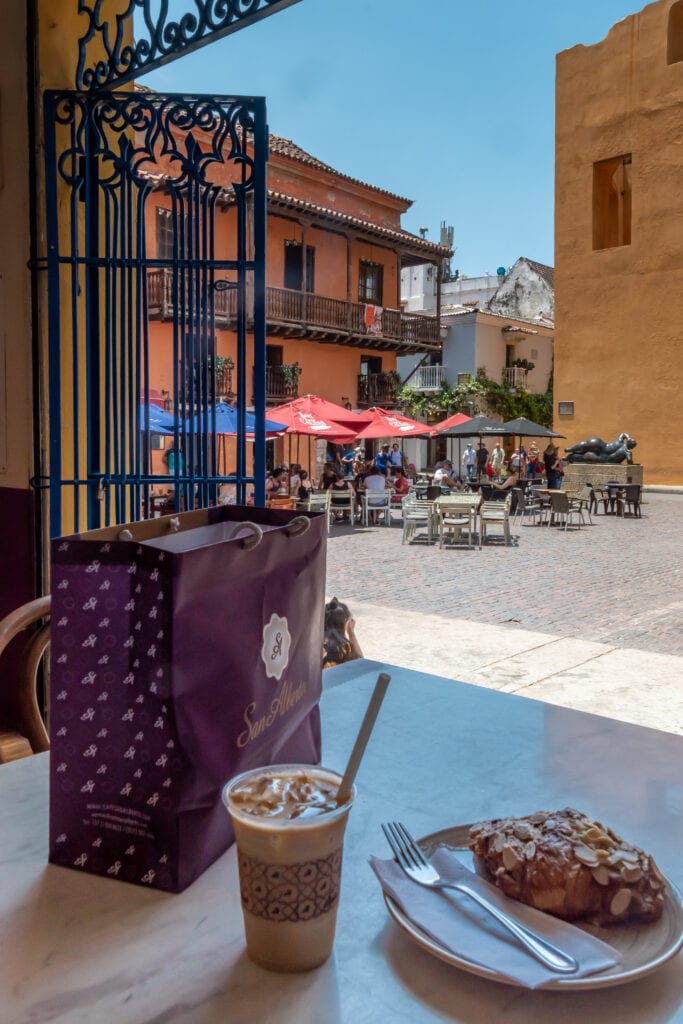
Plaza Santo Domingo is best known for the bronze statue of a naked, voluptuous woman by Columbian artist Fernando Bolero. Legend has it that if couples rub the breasts of La Gorda Gertrudis, or the Naked Lady of Bolero as she is also known, they will have a long love life together. Seeing how shiny her metal breasts were, I would say that many couples were not shy of publicly fondling those globes.
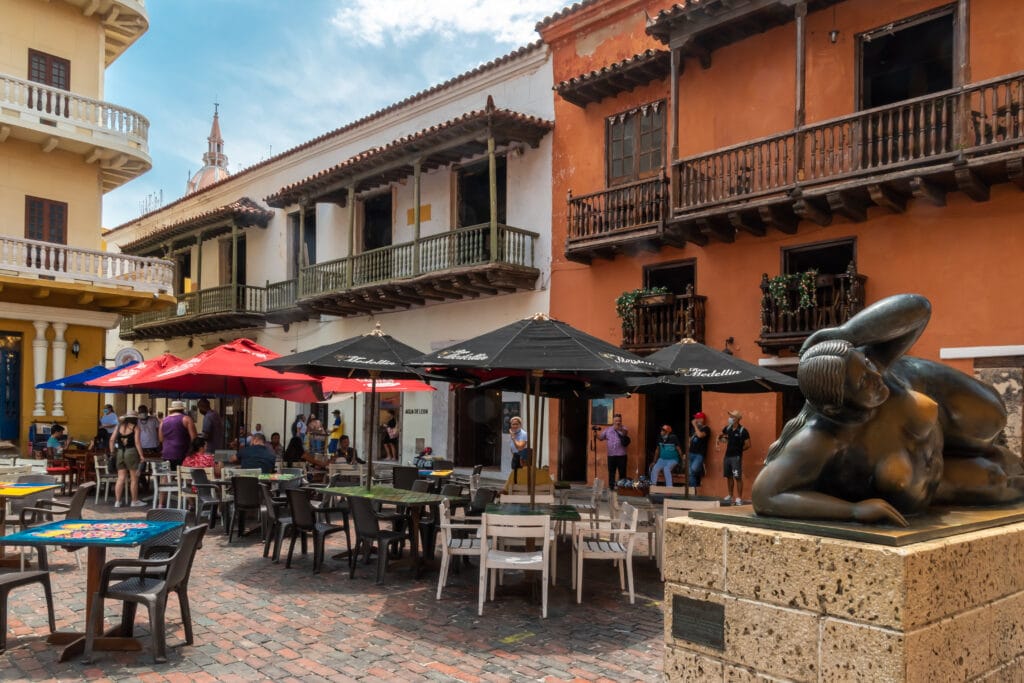
Fernando Botero has a very characteristic art style, always depicting larger than life figures. His work is exhibited throughout the world, including on Park Avenue in New York City, and in Barcelona, Paris and London to name just a few other famous locations.
Church of Santo Domingo
The plaza is named for the Church of Santo Domingo, the oldest church in the city, built in 1552. I stepped inside the cool building for a few moments and found more art with paintings prominently displayed throughout the church.
The colorful women of Cartagena
Throughout my walk in Old Town Cartagena, I saw women in brightly colored ruffled dresses carrying bowls or baskets of artfully arranged fruit on their head. They are called palenqueras and even though the practice originates from the town of Palenque they have become synonymous with Cartagena.
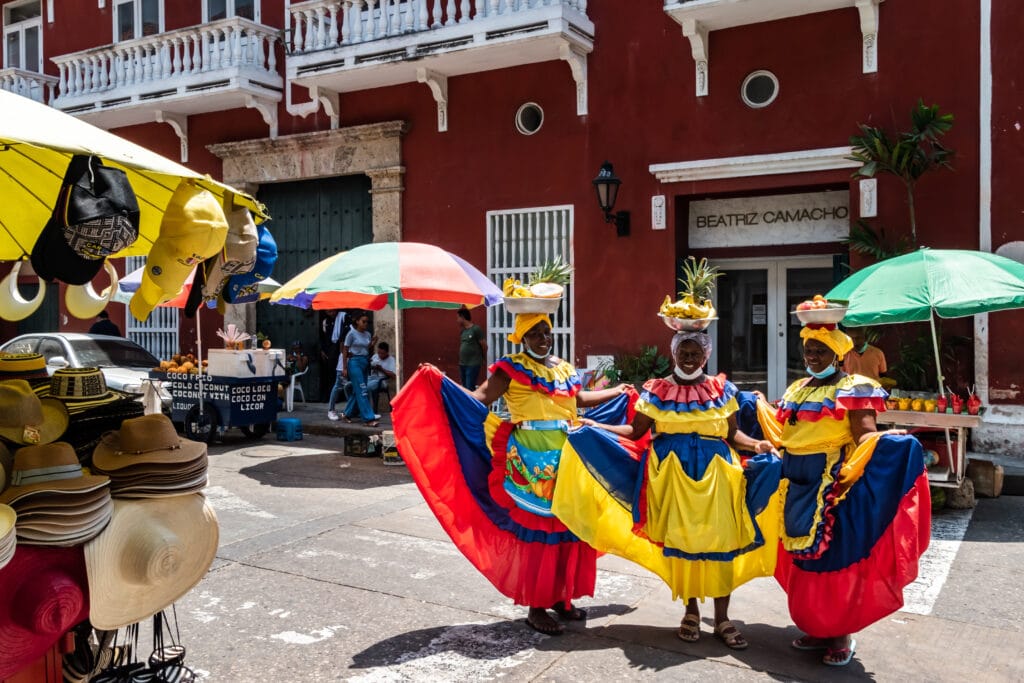
The history of selling baskets of fruit in Cartagena by these colorful ladies started in 1691. That year, the town of San Basilio de Palenque, which was ruled entirely by runaway African slaves, declared its independence from Spanish rule. To make money, the local women dressed in their traditional African garb and trekked the long distance to Cartagena to sell their one resource, fruit.
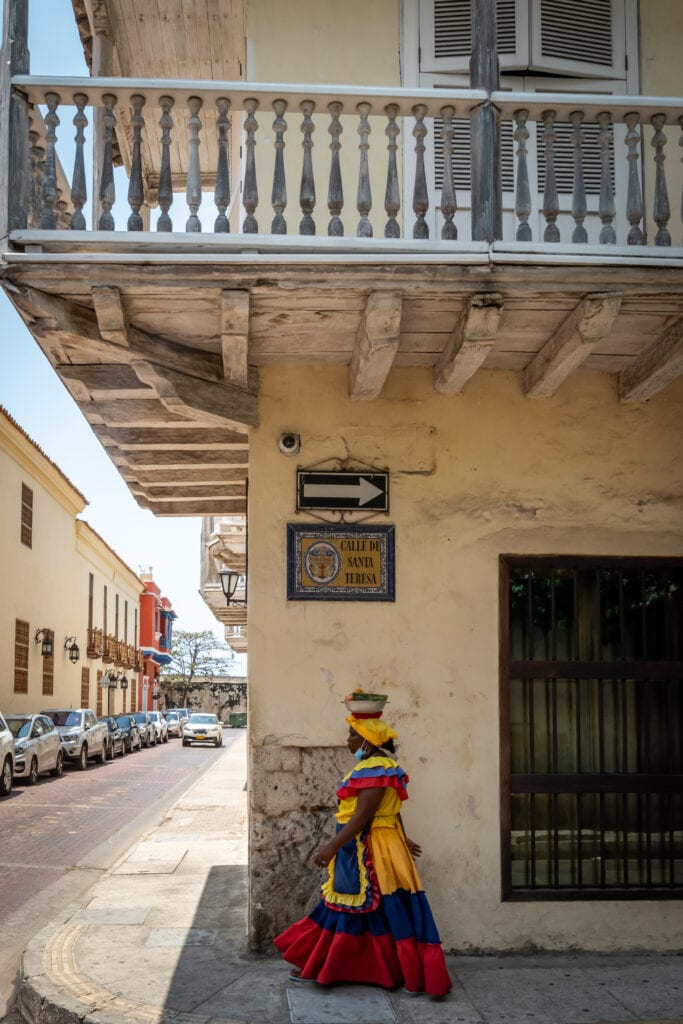
Today, the women wait around to have their photos taken by tourists and are more than happy to smile and pose for the camera though a tip is expected.
The local food scene
As I wandered, I also saw lots of street carts selling food. I knew that Cartagena was known for having great street food options. The smells wafting from their grills were very tempting and made my stomach rumble. But sadly, I did not have time to wait in line for another snack or drink. Next time, I hope.
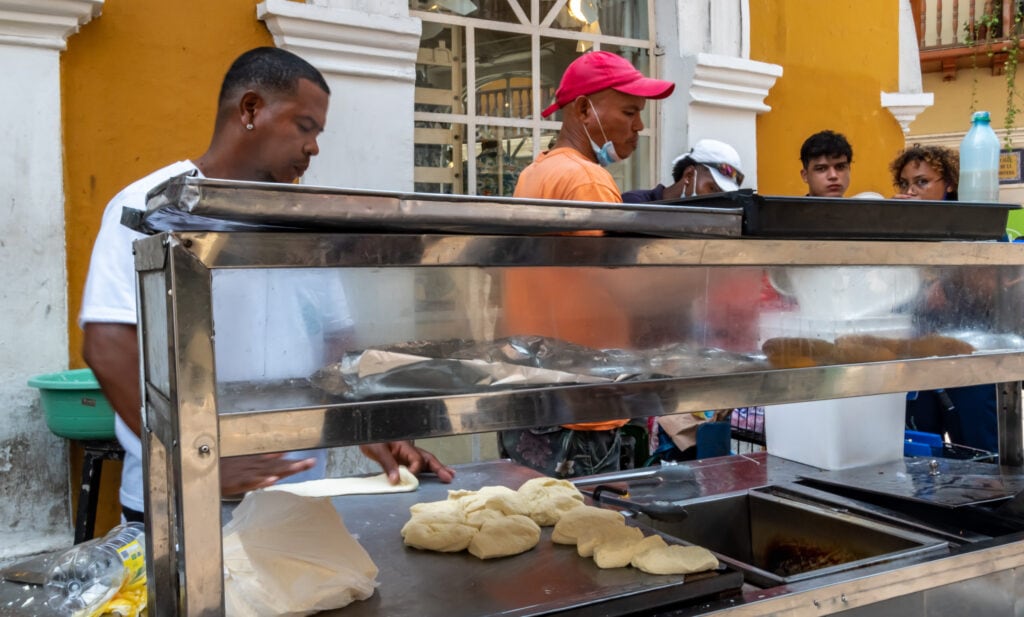
Plaza Bolivar
I passed through a few more plazas as I continued my explorations. Plaza Bolivar was a surprising green park oasis that provided shade for the short time I passed through it. It is named for the statue of the South American liberator, Simone Bolivar. In the 1600’s this space was called the Plaza de la Inquisición after the Spanish Court of Inquisition was set up in Cartagena.
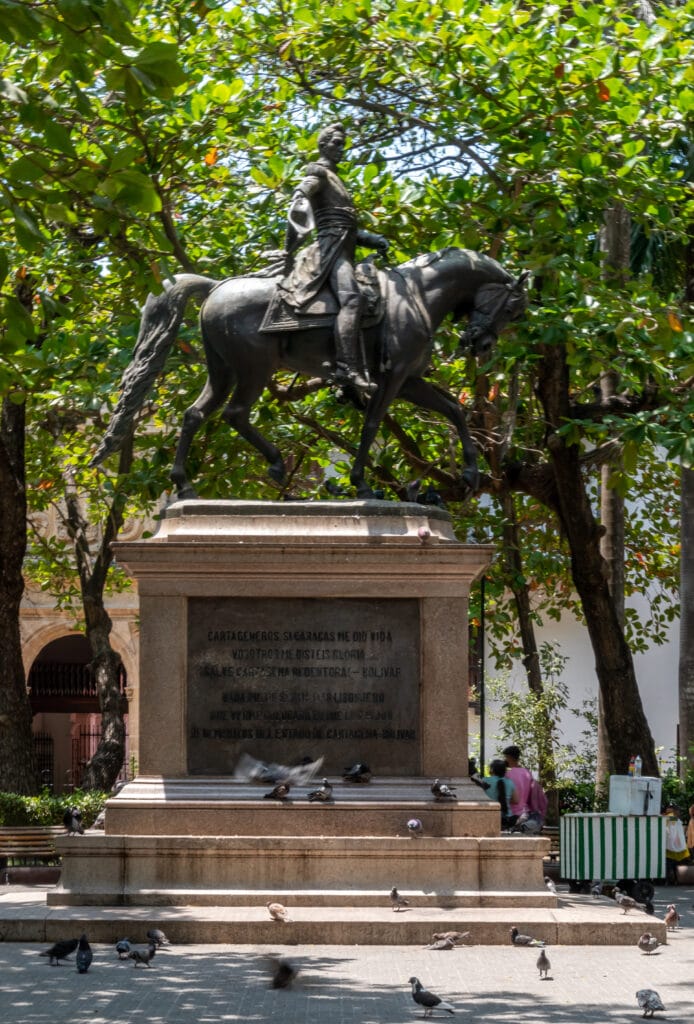
Plaza de San Pedro Claver
My favorite was the Plaza de San Pedro Claver. Besides the cafes and shops, the square also had numerous sculptures. In front of the San Pedro Claver Church and Museum was a traditional sculpture of the early 17th century Spanish Jesuit priest Pedro Claver who ministered to the slaves brought to the New World. After his death he became the patron saint of slaves.
In contrast, the square also has a collection of fanciful sculptures made of scrap metal by Cartagena artist Edgardo Carmona. The metallic scenes show locals performing various activities. My favorite of course was the sculpture showing a seamstress at work.
With more time I would have liked to also visit the San Pedro Claver Church and Museum, or the Museum of Modern Art across the street from it.
Around the corner I passed through Plaza de la Aduana with its statue of Christopher Columbus.
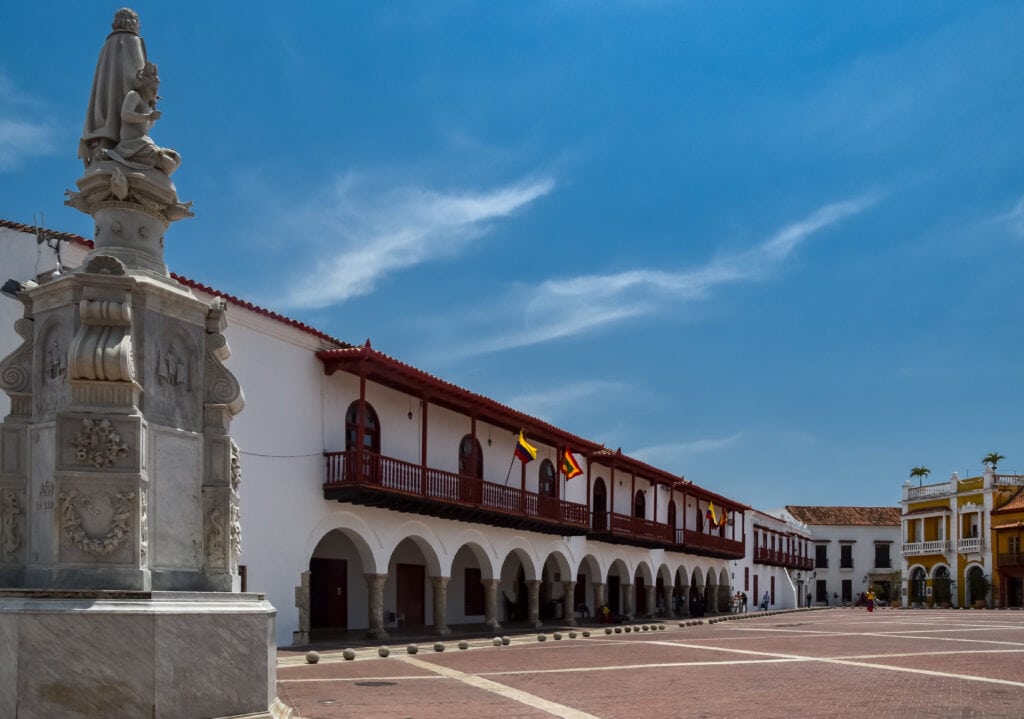
By this time, it was almost 1 PM and I had to start heading toward the clock tower at Torre del Reloj. Fortunately, at this point I was just steps away from it.
The gate underneath the tower was once the main city entrance and today is still the main landmark for the start or end of city tours. On the Old Town side the clock tower entrance opens into Plaza de Los Coches with its collection of colorful shops and eateries.
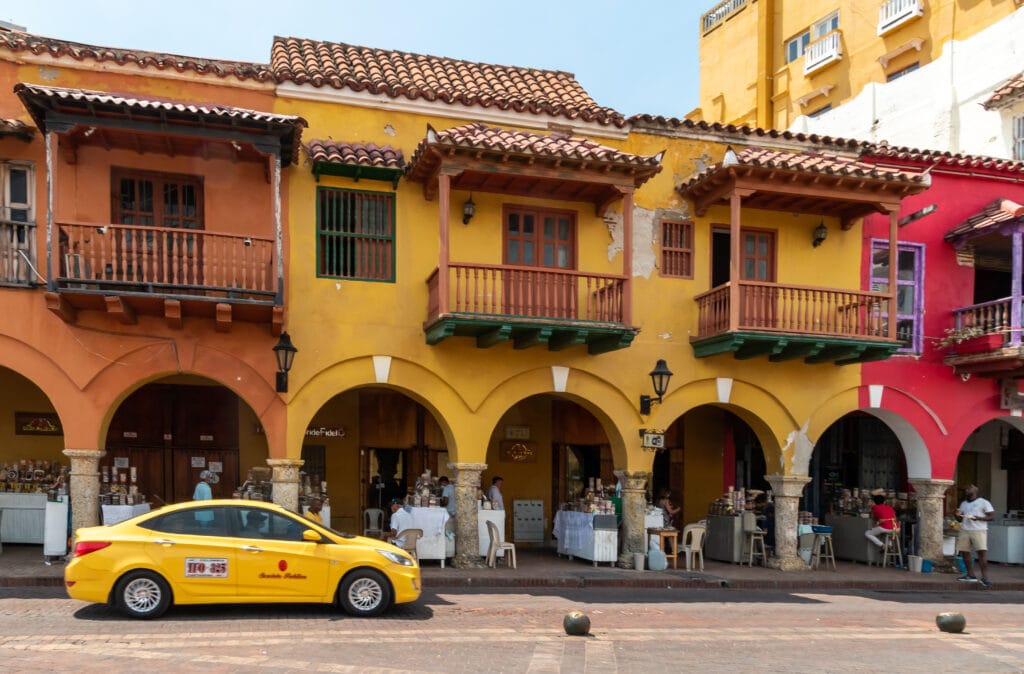
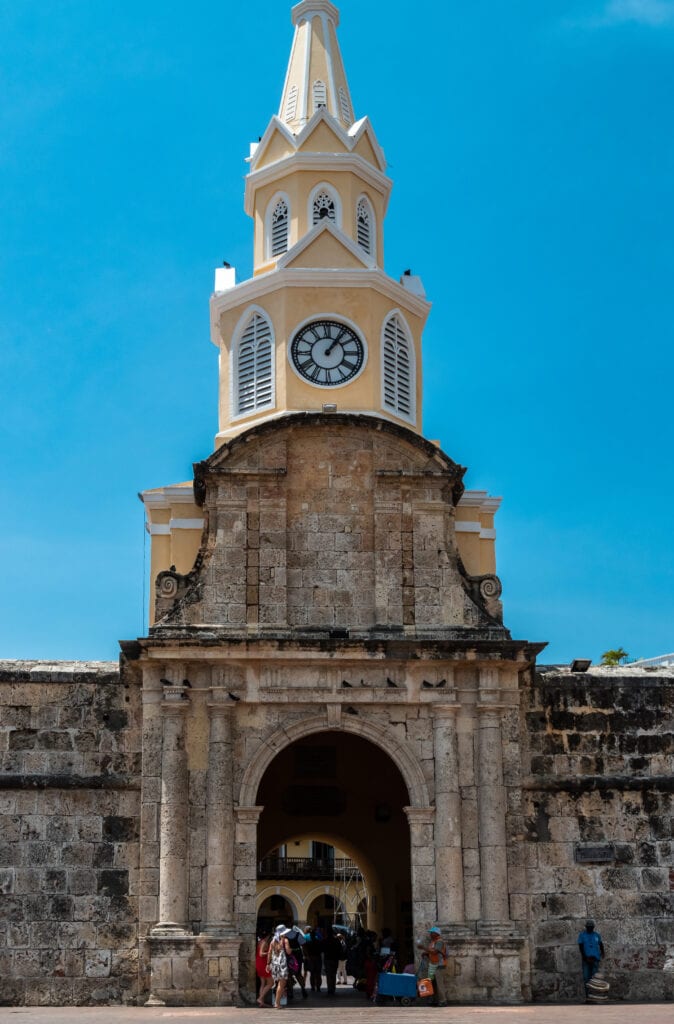
Across the street from the clock tower in the new part of the city was the Convention Center Plaza which was where I was supposed to catch my bus back to the ship. We were told by the guides on the morning bus that 1:30 PM was the last pick up to take us back to the ship.
However, when I got to the pick up spot at 1:15, the HopOn-HopOff bus reps on the ground said the last bus left at 12:30. They had no clue if there was another bus coming even after calling their home office.
I waited but once 1:30 came and went, I hopped in one of the taxis parked at the curb after negotiating a fare back to the port. $7 and a 15 minute ride got me back to the ship in plenty of time for the 2:30 call to be back on board.
Port Oasis Eco Park
Cartagena has done a nice job making the cruise port a sightseeing spot in its own right. They have developed the area into the Port Oasis Eco Park which you have to walk through to get back to the cruise ship (note that buses or taxis can only go as far as the entrance to the Eco Park).
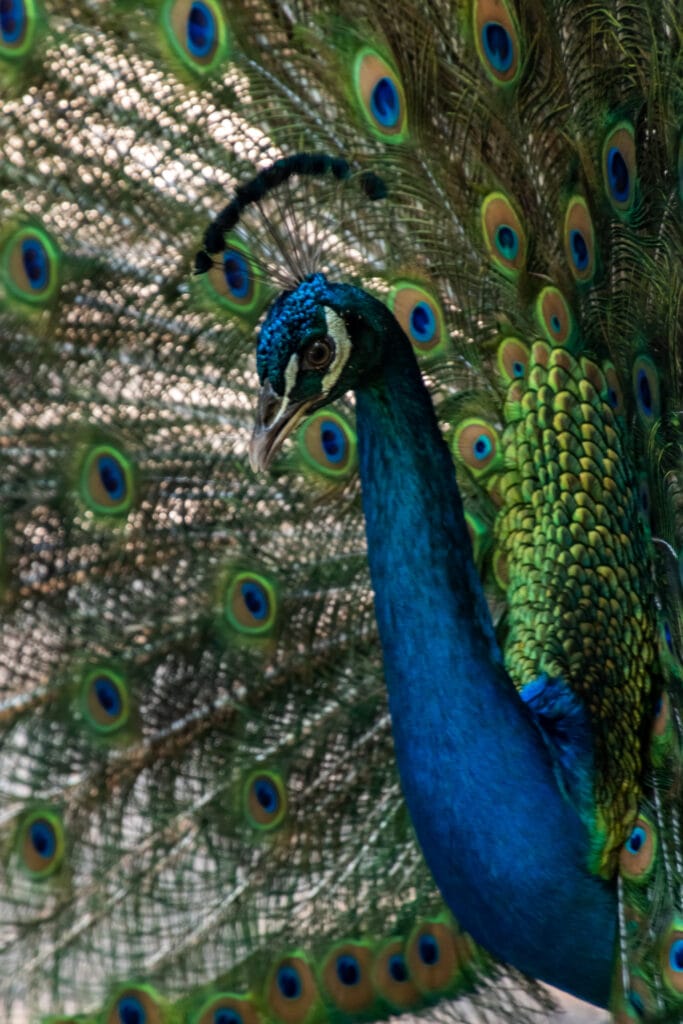
After the strong midday sun, it was a pleasure to walk through this green and shaded tropical space. The Eco Park has a variety of flora and fauna that is (mostly) native to Columbia.
I did not have time to explore for very long, but I did enjoy seeing and photographing the peacocks, the colorful macaws, and the flamingos as I headed back toward the ship. There are also other bird species, howler monkeys, deer, and iguanas but I did not have time to look for them.
From the Eco Park, it was a short walk along the pier back to the Ruby Princess where the ship’s staff was waiting with cool wet towels and cold, flavored water. If you didn’t want to walk, there was also a free shuttle along the pier that dropped you off close to the ship.
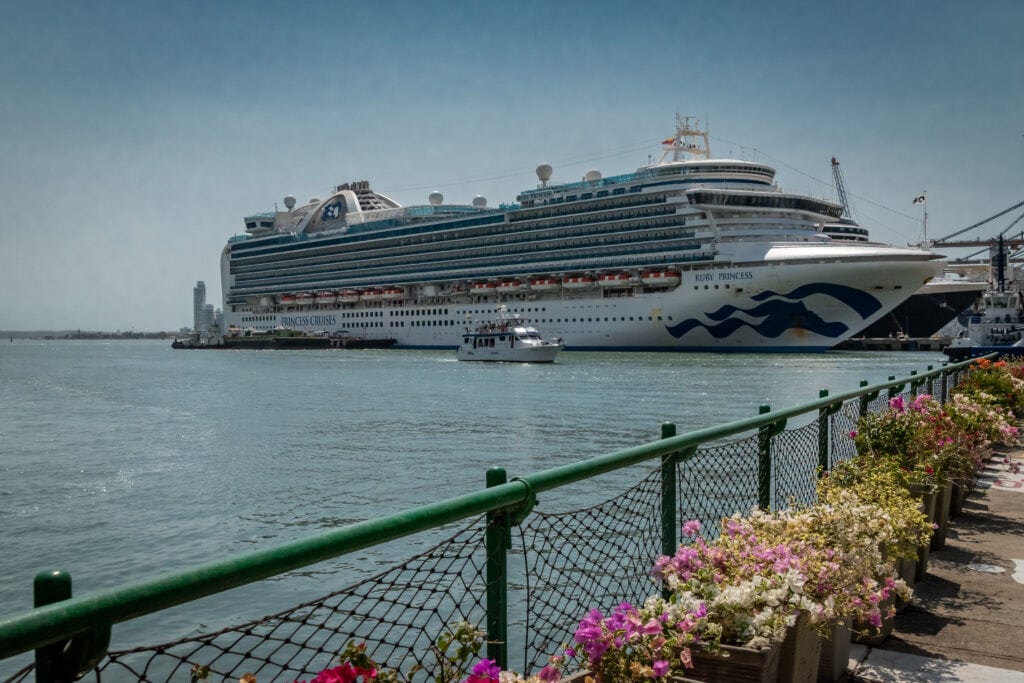
Even though I did not have a lot of time it felt like I had a good introduction to Cartagena with my independent explorations. The walled Old Town of Cartagena is not big – roughly 3/4 mile long by 1/3 mile wide. I found it easy to walk and see its main sights in a half day.
It would have been nice to spend a few days in Cartagena and stay in one of the boutique hotels in the heart of Old Town. Next time I would also like to explore the historic Getsemani district and its colorful street art.
Here is a summary of the top sights I had time for on my one day in Cartagena.
Top things to see in one day in Cartagena, Columbia
- Fort Castillo de San Filipe de Barajas
- Cartagena’s old city walls
- Las Bovedas shopping arcade
- Colorful houses in Cartagena’s Old Town
- Plaza Santo Domingo
- Church of Santo Domingo
- Coffee at Café San Alberto
- Ladies in colorful local dress
- Plaza Bolivar
- Plaza San Pedro Claver
- Plaza De la Aduana
- Plaza de Los Coches
- Monumento Torre Del Reloj – Old Clock Tower
- Port Oasis Eco Park
Travel tips for visiting Cartagena on a cruise
- Don’t be afraid to venture off on your own. Do your research; make a plan of what you want to see; set a timetable. We had to be back on board by 2:30 so my drop dead time for heading back to the ship was 1:30.
- Have a plan B for getting back to the ship. I knew that if I missed the bus, I could take a taxi back to the port and I researched how much it should cost.
- If taking the HopOn-HopOff bus tour and you are getting off, confirm the time and location of the pick up to get back to the ship.
- I studied google maps for the Old Town of Cartagena and bookmarked the sights I was interested in. I then used this as a reference as I was walking around town.
- Even though I was traveling in mid March, it was hot and humid with hardly any breeze. Bring a bottle of water and wear a hat – or you can always buy one as a souvenir from one of the street vendors.
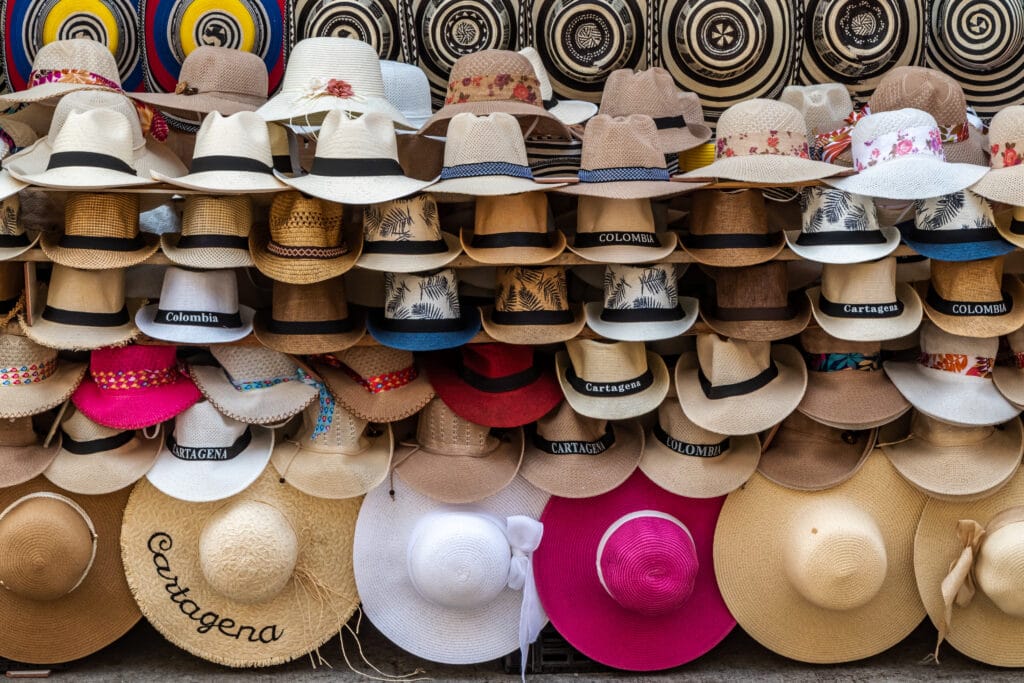
- DO NOT purchase water from vendors on the street. We were told that they will take used plastic water bottles, refill them, and sell them as if they were new. If you do buy a bottle of water, check the seal on the cap.
- Visit the old fort first thing in the morning when it is still somewhat cooler and take your time climbing the ramp to the top.
- If you want to take photos of the ladies in their local costumes with a basket of fruit on their head, expect to tip a couple of dollars.
- Note that if you choose to stay on the HopOn-Hopoff bus you will be spending some time waiting at each stop before the bus continues with the tour.
- Even if you don’t go into town, get off the ship and visit the Port Oasis Eco Park. It’s not a long walk and the shaded park is a nice place to spend an hour discovering the animals and having a cup of Columbian coffee.
I hope my day exploring Cartagena’s walled city and old fort gives you the inspiration to discover this colorful and historic city on your own as well.
For more of my cruising stories, links to all my cruising content, including all my other Princess cruises, can be found on my Experience – Cruising page.
Other related stories you may enjoy:
Details of my cruise on the Ruby Princess: Living Like Royalty On A Princess Cruise – A Ruby Princess Review With Photos
Find out what it is like to take a full transit Panama Canal cruise: A Full Transit Panama Canal Cruise – Passing Through an Engineering Marvel
Sharing My Panama Canal shore excursion experiences: I Loved These Panama Canal Cruise Excursions
How to visit Greek Islands on a cruise: Cruising In Style to the Most Beautiful Islands in Greece
The perfect English day in London: Have Only One Day in London? Make It a Perfectly English Day
Please note that I received a media upgraded cabin from Princess. All content and opinions in this post are my own.
Thanks for visiting.
Rose
Pin this!

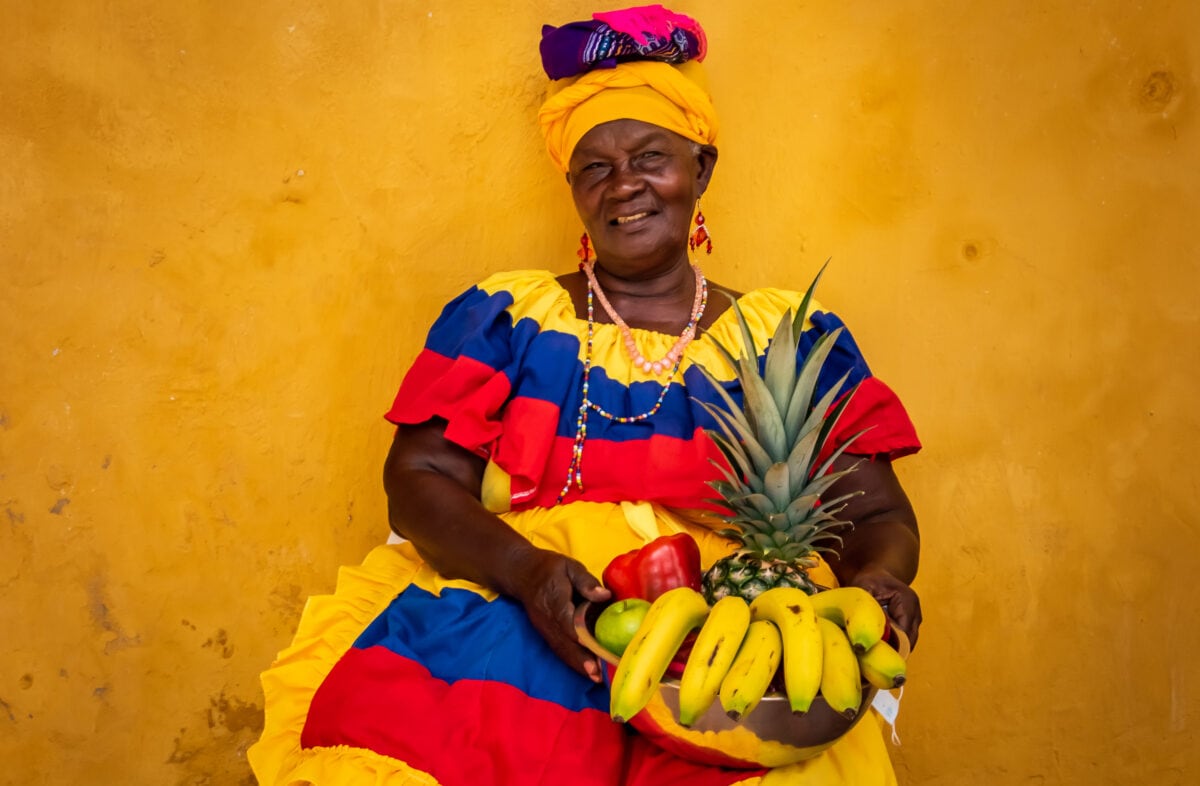
 This story was recognized by the North American Travel Journalists Association with a Silver award in the Photography – Cover or Feature Photo/Illustration category in the 2022 annual media travel awards competition .
This story was recognized by the North American Travel Journalists Association with a Silver award in the Photography – Cover or Feature Photo/Illustration category in the 2022 annual media travel awards competition .